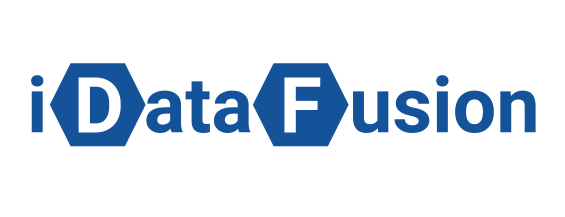Case study
How to measure the ROPO effect of 50%+ of offline sales and put it into practice to optimize your marketing strategy
Intro
When planning advertising campaigns it is important for marketing not only to calculate online deals, one needs to understand how online advertising affects offline deals. To this end, in 2021 the retailer in question launched end- to- end ROPO analytics grounded on electronic checks. The project was enforced concertedly with electronic receipt provider and iDataFusion.
iDataFusion is an analytics design integrator company, which enforced the data linking and aggregation scheme, data processing, and ROPO-attribution calculation in the project.
In standard ROPO-analytics systems the data on online users is matched with CRM data, but in this case about 20 of users are linked.
In the retailer's project, 96% of users receive an electronic receipt, and 36% of them open it. This makes it possible to digitize the fact of an offline purchase and track the user's actions from the website to the store. And cross-device technology makes it possible to connect sessions on different devices. Using an illustration, this looks like this - an as yet unidentified user enters the mobile website for any of the advertising campaigns, studies the product, makes an offline purchase and then opens an electronic receipt. This is enough to retrospectively identify this user and link sessions with him. As a result, more users are linked, which makes ROPO analytics more reliable compared to measuring effectiveness by online deals alone.
iDataFusion is an analytics design integrator company, which enforced the data linking and aggregation scheme, data processing, and ROPO-attribution calculation in the project.
In standard ROPO-analytics systems the data on online users is matched with CRM data, but in this case about 20 of users are linked.
In the retailer's project, 96% of users receive an electronic receipt, and 36% of them open it. This makes it possible to digitize the fact of an offline purchase and track the user's actions from the website to the store. And cross-device technology makes it possible to connect sessions on different devices. Using an illustration, this looks like this - an as yet unidentified user enters the mobile website for any of the advertising campaigns, studies the product, makes an offline purchase and then opens an electronic receipt. This is enough to retrospectively identify this user and link sessions with him. As a result, more users are linked, which makes ROPO analytics more reliable compared to measuring effectiveness by online deals alone.
The ROPO module data flow diagram

The ROPO module data flow diagram by iDataFusion
ROPO-analytics in practice
About 60% of the retailer’s customers who make a purchase offline, before that study it online. And about 40 of users who make a purchase online have preliminarily visited the salon offline. So when planning digital marketing it's necessary to take this into account and understand how online affects offline and vice versa.
At the time of writing, thanks to the ROPO-analytics project, the retailer has identified 24% of the 60% of customers who have contacted the brand online through advertising campaigns or organic conversions to the site, as well as offline. And that percentage continues to grow. Now, when planning a marketing budget, the retailer can now rely on this data.
Often when planning advertising campaigns in digital, marketing makes media plans based on the turnover of the online store. The offline turnover is not taken into account. The case of the retailer shows that there are more ROPO-customers (those who buy offline, having contacted the brand online) than online customers. That's why offline turnover cannot be ignored.
The retailer has defined an indicator for itself - the ROPO multiplier. It shows how much an advertising campaign affects offline sales. If this indicator is higher than one, it means that there is an impact on offline. The ROPO multiplier is the ratio of the total ROPO and online indicator to the online-only indicator. The higher the value of the multiplier, the greater the impact offline has on the performance of an advertising channel, platform or even campaign. Accordingly, it makes sense to invest your budget in this channel, as it affects both offline and online revenue.
At the time of writing, thanks to the ROPO-analytics project, the retailer has identified 24% of the 60% of customers who have contacted the brand online through advertising campaigns or organic conversions to the site, as well as offline. And that percentage continues to grow. Now, when planning a marketing budget, the retailer can now rely on this data.
Often when planning advertising campaigns in digital, marketing makes media plans based on the turnover of the online store. The offline turnover is not taken into account. The case of the retailer shows that there are more ROPO-customers (those who buy offline, having contacted the brand online) than online customers. That's why offline turnover cannot be ignored.
The retailer has defined an indicator for itself - the ROPO multiplier. It shows how much an advertising campaign affects offline sales. If this indicator is higher than one, it means that there is an impact on offline. The ROPO multiplier is the ratio of the total ROPO and online indicator to the online-only indicator. The higher the value of the multiplier, the greater the impact offline has on the performance of an advertising channel, platform or even campaign. Accordingly, it makes sense to invest your budget in this channel, as it affects both offline and online revenue.
ROPO Analytics Dashboard

ROPO Marketing Analytics Dashboard by iDataFusion

ROPO Marketing Analytics Dashboard by iDataFusion
The ROPO dashboard is assembled according to the requirements of different departments, depending on what indicators are important to them in their work. The dashboard consists of several sheets: the main one and the ones formed for different departments.
On the main dashboard page you can track orders in units, revenue by online ROPO and offline, expenses, conversion rate by session, online ROPO and online + offline ROPO, i.e. all those indicators that marketing is focused on when planning its strategy.
General indicators are derived for executives - the marketing director and the executive director. While marketers work mainly with deeper level data, presented in the bottom table of the dashboard. The table is grouped by channel, each of which can be accessed and sources can be seen. In addition, the table contains data by session, online and offline revenue, revenue overall by channel, ROPO multiplier, order value, online DRR, online DRR plus offline. All this allows you to work with indicators to understand how different advertising channels work, what revenue they bring, what their efficiency levels are, and also to conclude what group of channels it makes sense to invest in, and from which channels it makes sense to leave.
All of this happens during the more in-depth dashboard phase. Each marketer, at the level of his or her area of responsibility, studies the data on the campaign channels: the ROPO multiplier, the DRR, and the number of sessions. For example, even if a channel has a high multiplier but few sessions, there is no point in investing in the channel, because the volume of revenue from it will still be low. To understand the effectiveness of a channel, a marketer looks at the channel's overall revenue, online and offline revenue, and the cost of ordering in that channel, and makes a decision.
But you can't make a decision on unconfirmed assumptions. You must first confirm your hypotheses before moving your budget from one advertising campaign to another.
On the main dashboard page you can track orders in units, revenue by online ROPO and offline, expenses, conversion rate by session, online ROPO and online + offline ROPO, i.e. all those indicators that marketing is focused on when planning its strategy.
General indicators are derived for executives - the marketing director and the executive director. While marketers work mainly with deeper level data, presented in the bottom table of the dashboard. The table is grouped by channel, each of which can be accessed and sources can be seen. In addition, the table contains data by session, online and offline revenue, revenue overall by channel, ROPO multiplier, order value, online DRR, online DRR plus offline. All this allows you to work with indicators to understand how different advertising channels work, what revenue they bring, what their efficiency levels are, and also to conclude what group of channels it makes sense to invest in, and from which channels it makes sense to leave.
All of this happens during the more in-depth dashboard phase. Each marketer, at the level of his or her area of responsibility, studies the data on the campaign channels: the ROPO multiplier, the DRR, and the number of sessions. For example, even if a channel has a high multiplier but few sessions, there is no point in investing in the channel, because the volume of revenue from it will still be low. To understand the effectiveness of a channel, a marketer looks at the channel's overall revenue, online and offline revenue, and the cost of ordering in that channel, and makes a decision.
But you can't make a decision on unconfirmed assumptions. You must first confirm your hypotheses before moving your budget from one advertising campaign to another.
Marketing strategy goals
The main goals are to reduce CRR with a fixed advertising budget by redistributing the marketing mix, as well as to increase turnover.
Dashboard makes it possible to identify possible growth points from which marketers can make assumptions. However, scaling such campaigns without pre-testing is risky. That's why the marketing work strategy itself has changed. Now the team makes hypotheses, tests them on both budget relocation and budget increase on certain campaigns in different channels, in order to further manage the budget based on the already confirmed hypotheses.
Dashboard makes it possible to identify possible growth points from which marketers can make assumptions. However, scaling such campaigns without pre-testing is risky. That's why the marketing work strategy itself has changed. Now the team makes hypotheses, tests them on both budget relocation and budget increase on certain campaigns in different channels, in order to further manage the budget based on the already confirmed hypotheses.
Hypothesis: Increasing the budget for campaigns with low ROPO CRR, will increase total revenue
Testing parameters:
Budget increase of x x x x x x x x x USD
Investigated channel and campaigns "Context", Google Ads, "Not brand"
Testing period: September 2021
Key figures to assess the result
Online revenue + ROPO
Cost of order (CPO online + ROPO)
Share of advertising expenses (CRR online + ROPO) for the group of campaigns with budget increase and for the group of campaigns on non-brand campaigns of the "Context" channel
To test this hypothesis from non-brand traffic in Google Ads in the context channel were selected two advertising campaigns with low "CRR online plus offline", which in previous periods had a high proportion of the turnover in the overall channel.
For these campaigns without an increase in the budget was projected turnover growth of 37% of the planned. The criterion for success would be the achievement in the current month of the experiment half of the planned increase in turnover, i.e. 18.5%, while the cost of the order, CPO, was to remain at the same level. In addition, the online DRR should not be higher than 10.5%.
During hypothesis testing, the dashboard helps to monitor in real time how the metrics change. And if the hypothesis is not confirmed, the campaign can be disabled immediately.
As a result, from September 1 to September 22, 2021, taking into account the fact that the expenditure threshold has not been exceeded, the revenues have already reached 100% of what had been budgeted as a result of the campaign during the month.
According to the results, already on the 22nd of September the forecast for revenue on campaigns was exceeded by 8.4%, thus, the increase in revenue was almost 40%. At the same time, the CPO was lower by 29% and the online + ROPO DRR was lower than predicted, namely 7.8%, which is 26% lower than planned. On the whole, the ROPO was reduced by 2.5%.
As a result of testing the hypothesis the following conclusions were made: with an increase in the budget for non-brand campaigns in the channel Google Ads and context with a low CRR online + offline and a high proportion of the turnover, the turnover increases.
When planning budget reallocation, be sure to consider the capacity of channels. The channel should give good coverage, then an increase in the budget will lead to a significant increase in turnover. If a channel cannot give the necessary coverage, there is no point in investing the budget.
Budget increase of x x x x x x x x x USD
Investigated channel and campaigns "Context", Google Ads, "Not brand"
Testing period: September 2021
Key figures to assess the result
Online revenue + ROPO
Cost of order (CPO online + ROPO)
Share of advertising expenses (CRR online + ROPO) for the group of campaigns with budget increase and for the group of campaigns on non-brand campaigns of the "Context" channel
To test this hypothesis from non-brand traffic in Google Ads in the context channel were selected two advertising campaigns with low "CRR online plus offline", which in previous periods had a high proportion of the turnover in the overall channel.
For these campaigns without an increase in the budget was projected turnover growth of 37% of the planned. The criterion for success would be the achievement in the current month of the experiment half of the planned increase in turnover, i.e. 18.5%, while the cost of the order, CPO, was to remain at the same level. In addition, the online DRR should not be higher than 10.5%.
During hypothesis testing, the dashboard helps to monitor in real time how the metrics change. And if the hypothesis is not confirmed, the campaign can be disabled immediately.
As a result, from September 1 to September 22, 2021, taking into account the fact that the expenditure threshold has not been exceeded, the revenues have already reached 100% of what had been budgeted as a result of the campaign during the month.
According to the results, already on the 22nd of September the forecast for revenue on campaigns was exceeded by 8.4%, thus, the increase in revenue was almost 40%. At the same time, the CPO was lower by 29% and the online + ROPO DRR was lower than predicted, namely 7.8%, which is 26% lower than planned. On the whole, the ROPO was reduced by 2.5%.
As a result of testing the hypothesis the following conclusions were made: with an increase in the budget for non-brand campaigns in the channel Google Ads and context with a low CRR online + offline and a high proportion of the turnover, the turnover increases.
When planning budget reallocation, be sure to consider the capacity of channels. The channel should give good coverage, then an increase in the budget will lead to a significant increase in turnover. If a channel cannot give the necessary coverage, there is no point in investing the budget.
CASE STUDIES
CONTACT US
Drop us a note and we'll get back to you within a day
